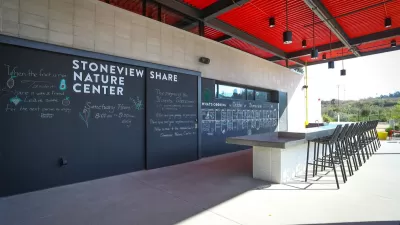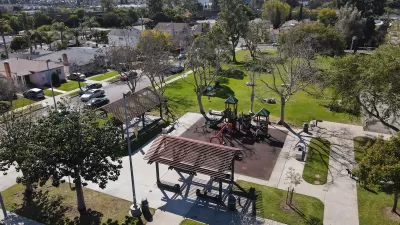The Los Angeles County Board of Supervisors just approved a motion to extend and expand an agreement with the L.A. Unified School District for the use of recreational facilities at Walnut Park Elementary School.
Increasing access to recreational facilities that already exist at schools is one of the oldest and most effective ways to provide more opportunities for physical activity and play in neighborhoods. After all, even the most under-served areas have schools. At a time of budget cuts and shortfalls, maximizing access to existing facilities is an efficient and economical use of public resources.
The Los Angeles County Board of Supervisors recently approved a motion by Supervisor Janice Hahn that opens the door to continued and expanded shared use by the County of a Los Angeles Unified School District (LAUSD) campus in Southeast Los Angeles. Specifically, the Walnut Park Elementary School campus has been home to Walnut Nature Park operated by the County’s Department of Parks and Recreation (DPR) on evenings and weekends for many years. The approved Board motion authorizes DPR to initiate a new agreement with LAUSD to extend the agreement for use of the nature park for ten years as well as expand it to include the school’s playground and multi-use field.
According to the 2016 Los Angeles Countywide Parks Needs Assessment, Walnut Park is an area with a very high level of park need. Walnut Nature Park had been the only park in the community for many years until Nogales Park opened late last year. Los Angeles County and LAUSD first entered into an agreement to share the Walnut Park Elementary School site in the late 1990s, when a first-of-its-kind Joint Use Agreement (JUA) was signed. This JUA was a model and template for subsequent JUAs.
FULL STORY: Board of Supervisors Greenlights Expansion of Shared Use of LAUSD Campus

Manufactured Crisis: Losing the Nation’s Largest Source of Unsubsidized Affordable Housing
Manufactured housing communities have long been an affordable housing option for millions of people living in the U.S., but that affordability is disappearing rapidly. How did we get here?

Americans May Be Stuck — But Why?
Americans are moving a lot less than they once did, and that is a problem. While Yoni Applebaum, in his highly-publicized article Stuck, gets the reasons badly wrong, it's still important to ask: why are we moving so much less than before?

Research Shows More Roads = More Driving
A national study shows, once again, that increasing road supply induces additional vehicle travel, particularly over the long run.

Jane Goodall Inspires with Message of Hope, Resilience, and Environmental Action
Speaking in Pasadena, Jane Goodall offered a hopeful and inspirational message, urging global compassion, environmental responsibility, and the power of individual action to shape a better future.

Harnessing the Power of Fungi for Environmental Cleanup
Mycoremediation — the use of fungi to break down or absorb environmental pollutants — offers a promising, cost-effective, and eco-friendly alternative to conventional methods for restoring contaminated sites.

For Advice on Accessibility, Look to Iceland
Cities around the country installed over 1,700 wheelchair ramps in the last five years, thanks in part to one man’s initiative.
Urban Design for Planners 1: Software Tools
This six-course series explores essential urban design concepts using open source software and equips planners with the tools they need to participate fully in the urban design process.
Planning for Universal Design
Learn the tools for implementing Universal Design in planning regulations.
Heyer Gruel & Associates PA
City of Moreno Valley
Institute for Housing and Urban Development Studies (IHS)
City of Grandview
Harvard GSD Executive Education
NYU Wagner Graduate School of Public Service
City of Cambridge, Maryland
Newport County Development Council: Connect Greater Newport





























